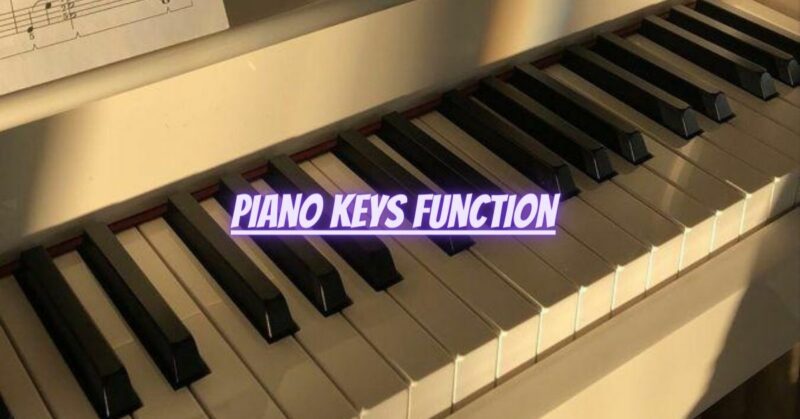The piano keyboard is a mesmerizing arrangement of black and white keys, each representing a specific musical note. These keys are the gateway to a vast musical universe, offering endless possibilities for creative expression and emotional communication. In this article, we will explore the essential functions of piano keys and how they contribute to the magic and versatility of this beloved instrument.
1. Representing Musical Notes:
The primary function of piano keys is to represent musical notes. The standard piano keyboard consists of 88 keys, including 52 white keys and 36 black keys. Each white key corresponds to a natural note (A, B, C, D, E, F, G), while the black keys represent the sharps and flats (C#, D#, F#, G#, A#).
2. Pitch and Octaves:
The keys on the piano are arranged in a specific order of pitches. As you move from left to right, the pitch of the notes increases. Each octave consists of 12 notes (both white and black keys), repeating the same pattern as you move up the keyboard. The piano covers several octaves, allowing musicians to explore a vast range of pitches and tonalities.
3. Dynamics and Volume Control:
One of the piano’s remarkable features is its ability to produce a wide range of dynamics, from soft to loud. The force with which a pianist strikes a key determines the volume of the sound. Playing softly is called pianissimo (pp), and playing loudly is called fortissimo (ff). The piano’s expressive range allows for delicate subtleties and powerful climaxes in musical performances.
4. Articulation and Expression:
Piano keys enable pianists to articulate their musical ideas with precision and nuance. The length of time a key is held down (note duration) and the way it is released (staccato or legato) affect the phrasing and overall expression of a piece. Pianists can use the keyboard to convey a wide range of emotions and moods in their performances.
5. Harmonies and Chords:
By pressing multiple keys simultaneously, pianists can create harmonies and chords. Chords are the building blocks of music, and the piano’s layout makes it an ideal instrument for exploring and understanding various chord progressions and harmonic structures.
6. Melodies and Counterpoint:
Piano keys allow for the creation of captivating melodies. Pianists can play single notes or weave intricate melodic lines, showcasing the instrument’s versatility in solo performances. Additionally, the piano’s polyphonic nature allows for the exploration of counterpoint, where multiple melodies intertwine harmoniously.
7. Musical Creativity and Composition:
The piano keys are an endless source of inspiration for composers and musicians. The keyboard layout makes it intuitive to experiment with melodies, harmonies, and different musical ideas. Pianists use the keys as their canvas, crafting captivating compositions that span various genres and musical styles.
Conclusion:
The piano keys are the foundation of the instrument’s artistry and versatility. From representing musical notes and pitches to enabling expressive dynamics and emotions, the piano keyboard empowers musicians to unlock their creative potential and communicate through the universal language of music. Whether played softly or with thunderous power, the piano keys continue to be an eternal source of enchantment, drawing music lovers into their harmonic embrace and inviting them on an infinite journey of musical exploration.


